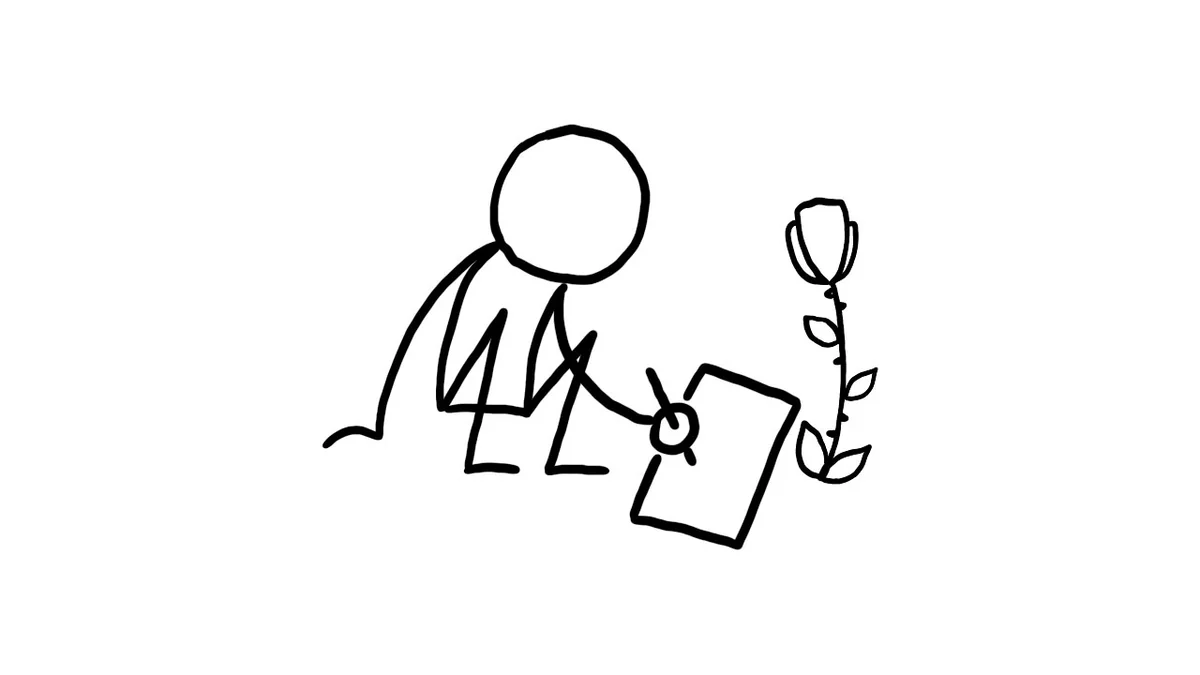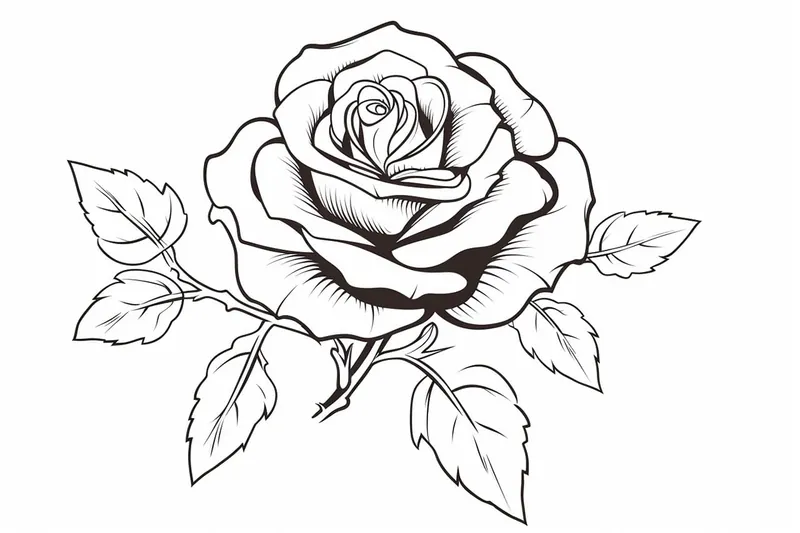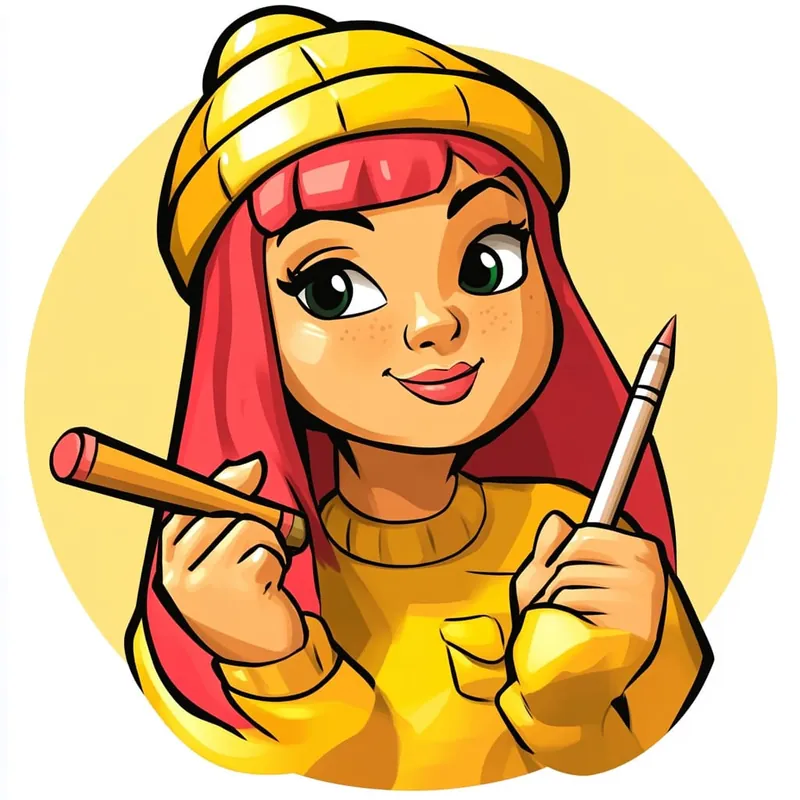How to Draw a Rose
Learn how to draw a rose roses by following my step-by-step instructions. You'll be creating beautiful pictures of roses in no time.

Materials You'll Need
- Drawing paper
- Pencil (HB or 2B)
- Eraser
- Colored pencils or markers (optional)
- Ruler (for straight lines)
- Compass (for circles)
- Blending stump or tissue (for shading)
If you like to draw, there are lots of tutorials out there to help you. You can learn how to draw all types of objects, including plants and flowers. But, there's not much specifically about drawing a rose. So, here's my take on it: how to draw a rose. This post is part of our learn to draw series.
Basics of drawing a flower
-
A flower consists of several parts. The stem and the leaves are always drawn first. They give the shape to the flower.
-
Next comes petals. They are made up of petal nodes. Each node has three curves, which will be described in the next section.
-
Finally, the center of the flower is composed of sepals, calyx, and corolla.
-
A flower can also have stamens, pistils, or none of them.
Types and styles of drawing roses
There are many types and styles of drawing and your rose can be presented in an almost limitless varieties. The beauty of creating a drawing is that you can choose whatever style or approach that suits you best. From simple to complex and intricate -- the choice is entirely yours.
Most drawings are made on the basis of a photo, but it can be done without a photo. A photo may be used as a reference for placing the objects in the scene, but is not necessary. The drawing is a very personal thing and it is the artist's style which shows in the final result.
First, draw it as a child
One of the easiest ways to get started with drawing a rose is to draw it as a child. Keep it very simple and focus on just the most important parts. For a rose, that's the stem (often shown with thorns) and the distinct shape of the petals. Don't worry too much about the details at this point in the drawing.
You can always go back and fill in the details later, but you'll be able to get a better sense of what the rose looks like at this stage. Use a pencil for this step, because it's easier to erase mistakes than when using a pen or marker. If you're feeling more confident, you can use an eraser as well.
How to draw a rose step by step
-
You need a pencil and a piece of paper. Draw a big circle on the paper and draw in the middle of it an arc going upwards.
-
Draw two lines going upwards at the edges of the circle.
-
Draw a big circle with a second little circle inside.
-
Draw a line in the middle of the big circle.
-
Now, on the small circle draw the shape of a rose.
-
Draw the same rose from different angles
In conclusion, the main steps for drawing a rose include first, the outline; then, adding a few more lines on top of the previous one, making sure that they are close together, and finally, filling out the petals. Let's say you want to draw a different flower, such as a daisy. You could repeat the same steps as before by using the outline from the rose drawing. However, if you want to make it look different, here's what you need to do: change the outline, add a few more lines above the previous one, ensure the lines are close together, and then fill the petals with more detail.
Tip: When drawing a rose, start by sketching the basic shapes lightly with a pencil—this includes the stem as a straight line and the petals as rounded shapes. Focus on the petal nodes; each petal usually has three curves that intertwine, so practice these curves separately before combining them. Use a kneaded eraser to refine your shapes, ensuring the curves flow naturally into one another.
Once you're satisfied with the outline, switch to a finer pencil or pen for detailing, adding texture to the petals by varying line thickness and incorporating gentle shading to create depth. Finally, consider using colored pencils or watercolors to enhance your rose with realistic hues, layering colors for a more vibrant look.
Gallery of Rose Drawings






 Rose Draw Battle
Rose Draw Battle
Two of our community artists compete to see who can draw the best rose. Who do you think won the battle? Let us know in the comments section below!
 Amelia Hayes (Crayon Conqueror)
Amelia Hayes (Crayon Conqueror)
Amelia Hayes, known as Crayon Conqueror, brings a burst of vibrant energy to every canvas with her signature use of crayon. Her imaginative compositions transform everyday scenes into colorful narratives that challenge the norm and celebrate creative freedom.

 Celeste Marlow (The Shading Sorceress)
Celeste Marlow (The Shading Sorceress)
A fine-arts graduate turned Yonderoo contender, Celeste is famed for her mastery of light and shadow. Her cross-hatched textures give every form dramatic depth, earning her Sorceress status among peers.
 Suggestions of Scenes and Settings for Rose Drawings
Suggestions of Scenes and Settings for Rose Drawings
-
Garden at Dawn: A single rose or a bush of roses captured in the soft, golden light of dawn, with dewdrops on the petals, set in a lush garden.
-
Romantic Bouquet: A detailed sketch of a bouquet of roses, perhaps tied with a ribbon, symbolizing love and romance, with soft shadows to add depth.
-
Wild Roses: Roses growing wild along a fence or in a meadow, with butterflies or bees visiting the blooms, showcasing natural beauty.
-
Still Life with Roses: A classic still life scene featuring roses in a vase, accompanied by other objects like books, fruits, or a vintage clock, highlighting texture and light.
-
Rose in the Rain: A single rose or a cluster with raindrops clinging to the petals and leaves, set against a rainy background to evoke a sense of freshness and renewal.
-
Moonlit Rose Garden: A scene of a rose garden under the moonlight, with shadows and light creating a mystical, serene atmosphere.
-
Rose and Thorns: A close-up view of a rose that emphasizes the contrast between the delicate beauty of the bloom and the sharpness of its thorns, reflecting the dual nature of beauty.
-
Vintage Rose Illustration: A rose drawn in a vintage or botanical illustration style, with detailed linework and possibly annotations, suitable for a book or a collection.
-
Rose on a Windowsill: A single rose in a simple vase sitting on a windowsill, with light streaming through the window, creating a peaceful, contemplative mood.
-
Rose with Letter: A scene depicting a rose lying atop an old, handwritten letter or a sealed envelope, suggesting a story of love, loss, or a timeless message.